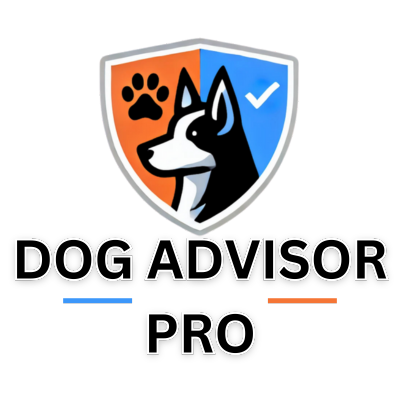If you’ve noticed your dog standing over their water bowl without drinking, it’s not just odd—it’s potentially serious. Hydration is critical for a dog’s health. Water supports everything from regulating body temperature to keeping organs running smoothly. So when your dog hesitates at the bowl, it could be a sign something’s wrong. This guide breaks down the possible reasons and what you can do.
Medical Reasons: When Drinking Hurts or Feels Wrong
Nausea and Upset Stomach
Dogs who feel nauseous often avoid food and water. Nausea can come from spoiled food, toxic substances, or underlying illnesses. Even aging dogs can experience nausea due to other conditions. If your dog hovers near water but doesn’t drink, they might want water but feel too sick to handle it.
Bladder Infections
Painful urination can make dogs associate drinking with discomfort. Bladder infections can also disrupt thirst signals. Your dog might approach the bowl, recognize the need to hydrate, but avoid drinking to prevent the pain that comes later.
Kidney Disease and Chronic Illness
Conditions like kidney disease, diabetes, liver problems, and cancer can dull thirst or cause general malaise. These illnesses affect how your dog processes and balances fluids. Hovering over the water bowl might reflect internal conflict: the body wants water, but illness blunts the drive to drink.
Dental Pain
Bad teeth, inflamed gums, or oral injuries can make drinking physically painful—especially if the water’s cold. A dog with dental issues might approach the bowl out of thirst but pull back to avoid pain.
Mobility Issues in Older Dogs
Arthritis or spinal issues can make bending down to drink uncomfortable. Older dogs may want to drink but struggle physically, especially if the bowl is too low.
Environmental and Bowl-Related Factors
Bowl Material
Some dogs dislike plastic or metal bowls due to smell, taste, or even reflections. If your dog doesn’t like the bowl, they may hesitate or avoid drinking altogether.
Shape and Depth
A deep, narrow bowl can be hard for some dogs to use—especially flat-faced breeds like Pugs or dogs with long snouts. An ill-fitting bowl can make drinking awkward or frustrating.
Placement and Accessibility
If the bowl is in a loud, busy, or uncomfortable area, your dog might feel unsafe drinking there. Older dogs or those with arthritis may also benefit from elevated bowls.
Water Quality Matters
Dogs have sensitive noses. Water that’s stale, full of food particles, or smells odd can turn them off. Even moving to a new home where the water tastes different can make some dogs hesitant. Chlorinated tap water, for example, may smell strong to them.
Behavioral and Psychological Causes
Anxiety or Fear
Stress from loud noises, separation anxiety, or past negative experiences at the bowl (e.g., getting startled) can make drinking feel unsafe. An anxious dog might hover, unsure if it’s okay to drink.
Cognitive Decline
Older dogs with canine cognitive dysfunction might forget what they’re doing, even mid-task. If your dog stares at their bowl blankly, they could be confused or disoriented.
Environmental or Routine Changes
New Locations or Travel
A different house, water source, or travel stress can all affect your dog’s routine and make them hesitant to drink.
Changes in Routine
Switching to wet food (which has high moisture content), changes in feeding times, or household disruptions can affect how much water your dog needs or wants.
Spotting Dehydration: Know the Signs
Dehydration can quickly become dangerous. Look for:
- Lethargy
- Dry or sticky gums
- Sunken eyes
- Skin that doesn’t bounce back when pinched
- Thick saliva
- Dark or decreased urine
- Excessive panting
Even if your dog isn’t showing these symptoms, hovering without drinking is a red flag. It’s better to act early.
What You Can Do: Practical Fixes at Home
While you wait to consult your vet, try these:
- Fresh Water: Change it at least twice daily.
- Clean Bowls: Wash with soap to remove residue or bacteria.
- Try Different Bowls: Ceramic, stainless steel, shallow, wide—see what your dog prefers.
- Use Multiple Water Stations: Especially in quiet, low-traffic areas.
- Add Flavor: Low-sodium broth or a splash of dog-safe apple juice can make water more appealing.
- Offer Ice Cubes: Fun, especially in warm weather.
- Water Fountains: Some dogs love moving water.
- Hydrate Through Food: Mix water into kibble or switch to wet food.
- Elevate the Bowl: Helps older dogs or those with mobility issues.
- Positive Reinforcement: Praise or treat when your dog drinks.
When to Call the Vet
If your dog consistently avoids drinking—especially if you’ve tried everything above—it’s time to see the vet. They’ll rule out medical conditions, assess your dog’s hydration, and may refer you to a behaviorist if it seems psychological.
Don’t wait. The behavior of hovering over the bowl but not drinking isn’t normal—and the consequences of ignoring it can be serious.
Bottom Line
If your dog is hovering over the water bowl but not drinking, it’s a sign something’s off. Whether it’s pain, discomfort, anxiety, or environmental, this behavior isn’t just quirky—it’s potentially dangerous. Monitor for signs of dehydration, try practical fixes, and don’t hesitate to involve a vet. Keeping your dog hydrated is one of the most basic—and most important—ways to protect their health.
